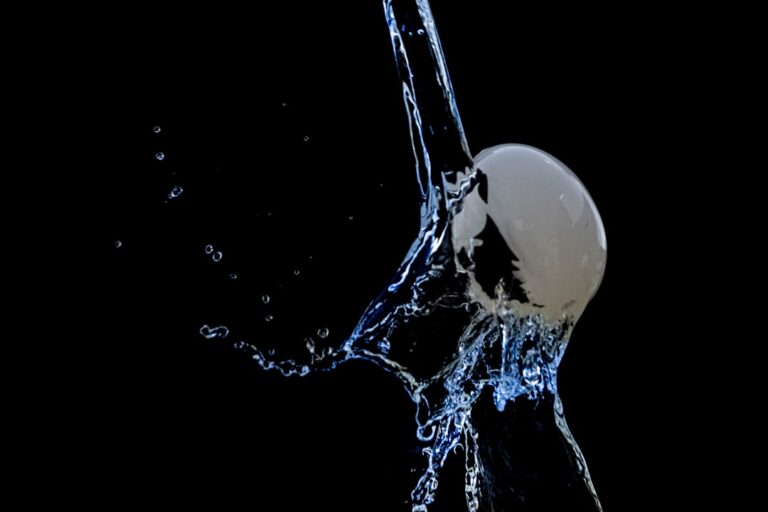In the realm of home improvement, few projects can transform a kitchen or bathroom as dramatically as a backsplash. This often-overlooked area serves not only a functional purpose—protecting walls from splashes and stains—but also acts as a canvas for personal expression. With the rise of DIY culture, homeowners are increasingly exploring creative and cost-effective ways to enhance their spaces.
The beauty of a DIY backsplash lies in its versatility; it can reflect individual style, utilize unique materials, and even incorporate sustainable practices. As homeowners embark on this journey, they discover a plethora of options that cater to various tastes and budgets. From recycled materials to intricate mosaic designs, the possibilities are endless.
This article will delve into an array of DIY backsplash ideas that can inspire anyone looking to add a touch of personality to their home. By exploring different materials and techniques, individuals can find the perfect solution that not only elevates their space but also showcases their creativity.
Key Takeaways
- DIY backsplash ideas offer a cost-effective way to update your kitchen or bathroom.
- Recycled materials like old wine corks or tin ceiling tiles can create a unique and eco-friendly backsplash.
- Mosaic tile designs can add a pop of color and personality to your kitchen or bathroom.
- Stencil and paint techniques allow for a custom and personalized backsplash design.
- Chalkboard and whiteboard options provide a functional and customizable backsplash solution.
Recycled Materials for a Unique Backsplash
Unique Mosaic Designs
Old glass bottles can be cut and arranged to form a stunning mosaic that catches the light beautifully. Similarly, reclaimed wood from pallets or barn doors can be repurposed into a rustic backsplash that tells a story of its own.
The Charm of Uniqueness
The charm of using recycled materials lies in their uniqueness; no two pieces are alike, ensuring that each backsplash is one-of-a-kind. Moreover, incorporating recycled materials into a backsplash project can be an engaging and fulfilling experience.
Getting Creative with Salvaged Materials
Homeowners can scour local thrift stores, salvage yards, or even their own homes for items that can be transformed into art. For example, broken tiles from previous renovations can be creatively pieced together to form an eye-catching design. This not only saves money but also allows for a personal touch that mass-produced options simply cannot provide.
By embracing the beauty of imperfection and the history behind each material, individuals can create a backsplash that is both sustainable and visually striking.
Mosaic Tile Designs for a Colorful Backsplash
Mosaic tile designs offer an exciting opportunity to infuse color and creativity into a kitchen or bathroom backsplash. These intricate patterns can be crafted from various materials, including ceramic, glass, or even stone, allowing for endless combinations of colors and textures. The beauty of mosaic tiles lies in their ability to create stunning visual effects; whether it’s a vibrant explosion of colors or a subtle blend of shades, the result is always captivating.
Creating a mosaic backsplash can be a rewarding project that allows for artistic expression. Homeowners can choose to follow a specific pattern or let their creativity flow freely, arranging tiles in unique shapes and designs. For those who may feel overwhelmed by the prospect of designing their own mosaic, there are numerous pre-made kits available that provide guidance while still allowing for customization.
The tactile nature of working with tiles also adds an element of satisfaction as individuals piece together their vision, transforming their space into a vibrant work of art.
Stencil and Paint Techniques for a Custom Backsplash
| Technique | Materials Needed | Time Required | Difficulty Level |
|---|---|---|---|
| Stencil | Stencil, paint, paintbrush, painter’s tape | 1-2 hours | Easy |
| Painting | Paint, paintbrush, painter’s tape, primer | 2-3 hours | Moderate |
| Sponge Painting | Sponge, paint, paintbrush, painter’s tape | 2-3 hours | Moderate |
For those seeking a more budget-friendly option, stencil and paint techniques can yield stunning results without the need for extensive materials or tools. This method allows homeowners to create intricate designs that mimic the look of tile or other materials while maintaining flexibility in color and pattern choices. With just a few stencils and some paint, individuals can achieve a custom backsplash that reflects their personal style.
The process begins with selecting a design that complements the overall aesthetic of the space. Once the stencil is chosen, homeowners can experiment with different paint colors to find the perfect combination. This technique not only allows for creativity but also provides an opportunity to change the look of the backsplash easily in the future.
If trends shift or personal tastes evolve, repainting is a simple solution that keeps the space feeling fresh and updated.
Chalkboard and Whiteboard Backsplash Options
Incorporating chalkboard or whiteboard surfaces into a backsplash design introduces an element of fun and functionality. These surfaces provide an interactive space where family members can jot down notes, grocery lists, or even doodles, making them particularly appealing in busy kitchens. The versatility of chalkboard paint allows homeowners to customize the size and shape of the area they wish to cover, creating a unique focal point in the room.
Additionally, chalkboard and whiteboard backsplashes are incredibly easy to install and maintain. A simple application of chalkboard paint over existing surfaces can transform an ordinary wall into a creative outlet. For those who prefer a more polished look, pre-made chalkboard or whiteboard panels are available and can be easily mounted.
This option not only adds practicality but also encourages family interaction, making it an ideal choice for homes with children or those who enjoy cooking together.
Natural Stone and Brick Backsplash Ideas
Natural stone and brick backsplashes exude timeless elegance and durability, making them popular choices for homeowners looking to add sophistication to their spaces. The organic textures and colors found in materials like slate, granite, or limestone create a warm and inviting atmosphere that complements various design styles—from rustic farmhouse to modern chic. Each stone piece carries its own unique characteristics, ensuring that every installation is distinct.
Brick backsplashes offer a similar appeal with their rugged charm and historical significance. Whether opting for traditional red brick or painted whitewashed varieties, these surfaces bring depth and character to any kitchen or bathroom. Homeowners can choose to leave the brick exposed for an industrial look or apply a sealant for added protection against moisture and stains.
The versatility of natural stone and brick allows individuals to create stunning focal points that enhance the overall aesthetic of their homes.
Wallpaper and Fabric Backsplash Designs
For those seeking an unconventional approach to backsplashes, wallpaper and fabric offer exciting possibilities. These materials allow homeowners to explore patterns and textures that traditional tiles cannot provide. With an array of designs available—from bold florals to subtle geometrics—individuals can easily find options that resonate with their personal style.
Installing wallpaper or fabric as a backsplash requires careful consideration of materials that can withstand moisture and heat. Vinyl wallpaper is often recommended due to its durability and ease of cleaning. Alternatively, fabric can be treated with water-resistant coatings to ensure longevity in kitchen environments.
This approach not only adds visual interest but also allows for easy updates; changing out wallpaper or fabric is a straightforward process that keeps spaces feeling fresh without significant renovations.
Vintage and Repurposed Items for a Quirky Backsplash
Embracing vintage and repurposed items can lead to truly unique backsplash designs that reflect personal history and creativity. Homeowners can scour flea markets, antique shops, or even their own attics for items that can be transformed into artful backsplashes. Old plates, mismatched tiles, or even vintage postcards can be arranged in creative patterns to create an eclectic look that tells a story.
This approach not only adds character but also promotes sustainability by giving new life to items that might otherwise end up in landfills. The charm of using vintage pieces lies in their imperfections; each item carries its own history, adding depth to the overall design. By combining various textures and colors from different eras, individuals can create a quirky backsplash that serves as both a functional surface and a conversation starter.
Glass and Mirror Backsplash Options
Glass and mirror backsplashes offer a sleek and modern aesthetic that can make spaces feel larger and more open. The reflective qualities of these materials not only enhance natural light but also create an illusion of depth in smaller areas. Homeowners can choose from clear glass panels or colored options to achieve the desired effect while maintaining a contemporary feel.
Installing glass or mirror backsplashes requires careful consideration of installation techniques to ensure durability and safety. While some may opt for professional installation due to the fragility of glass, others may choose adhesive options for easier DIY projects. Regardless of the method chosen, glass backsplashes provide an elegant solution that elevates any kitchen or bathroom design while remaining easy to clean and maintain.
Wood Paneling and Plank Backsplash Ideas
Wood paneling offers warmth and texture that can transform any kitchen or bathroom into a cozy retreat. Whether opting for reclaimed wood planks or new boards stained in rich hues, this material brings an organic element that complements various design styles—from rustic cabins to modern minimalist spaces. The versatility of wood allows homeowners to experiment with different finishes, patterns, and arrangements.
Creating a wood backsplash involves careful planning to ensure proper sealing against moisture damage. Homeowners should consider using treated wood or applying protective coatings to enhance durability in high-humidity areas like kitchens. Additionally, incorporating different wood types or finishes can create visual interest while maintaining cohesion with existing cabinetry or decor elements.
Conclusion and Tips for Installing a DIY Backsplash
In conclusion, embarking on a DIY backsplash project opens up a world of creative possibilities for homeowners looking to enhance their spaces. From recycled materials to intricate mosaics, each option offers unique benefits that cater to various tastes and budgets. As individuals explore these ideas, they should keep in mind several key tips for successful installation.
First and foremost, proper planning is essential; measuring the area accurately ensures that materials are purchased accordingly while minimizing waste. Additionally, selecting appropriate adhesives or installation methods based on chosen materials will contribute significantly to the longevity of the backsplash. Finally, embracing creativity throughout the process allows homeowners to infuse their personalities into their designs—transforming ordinary spaces into extraordinary reflections of themselves.
By considering these factors and exploring diverse options available today, anyone can create a stunning DIY backsplash that elevates their home’s aesthetic while showcasing their unique style.
FAQs
What are some popular materials for DIY backsplashes?
Some popular materials for DIY backsplashes include ceramic or porcelain tiles, glass tiles, peel-and-stick vinyl tiles, beadboard, and stainless steel sheets.
What tools are needed for installing a DIY backsplash?
The tools needed for installing a DIY backsplash typically include a tile cutter, tile adhesive, grout, a trowel, a level, a pencil, a tape measure, and a sponge for cleaning.
Are there any budget-friendly DIY backsplash ideas?
Yes, there are several budget-friendly DIY backsplash ideas such as using peel-and-stick vinyl tiles, painting a faux tile backsplash, or using beadboard panels.
How difficult is it to install a DIY backsplash?
The difficulty of installing a DIY backsplash can vary depending on the material and the size of the project. Generally, it can be a moderate to difficult DIY project, especially if it involves cutting and fitting tiles.
What are some design ideas for DIY backsplashes?
Some design ideas for DIY backsplashes include creating a mosaic pattern with different colored tiles, using subway tiles for a classic look, or incorporating a bold pattern or color to make a statement.






